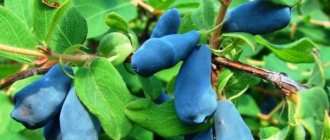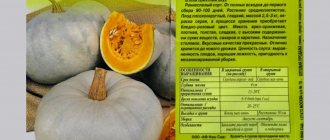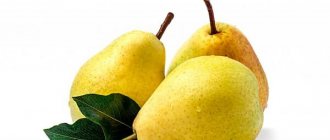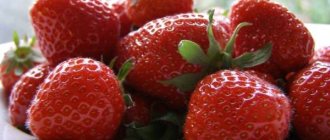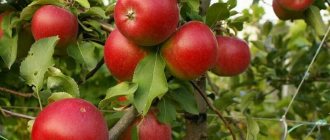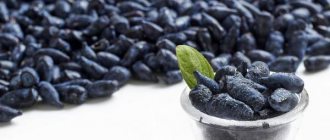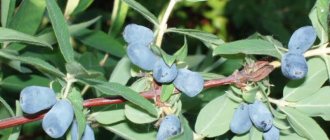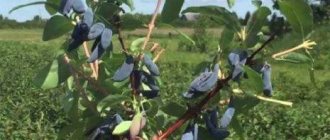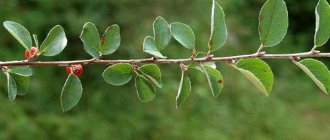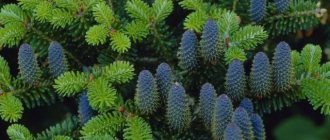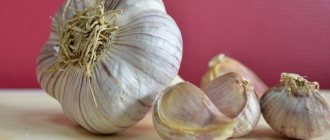3449
In some collections of alternative medicine, Tatarian honeysuckle is found with a photo and description. The fruits of this shrub are used to treat migraines, spasms, cataracts, and hiccups. A decoction of the berries is used to rinse the mouth to combat sore throat and stomatitis. Freshly squeezed juice is used to wipe bleeding gums and lubricate rough skin.
Berries on Tatar honeysuckle
Description of the plant
Honeysuckle has not gained popularity among gardeners by chance. It is very resistant to various negative natural phenomena, grows quite quickly, and is very beautiful. The roots of this plant are branched and fibrous. They lie at a depth of up to 1 meter. Hollow shoots are light brown or slightly yellowish when young. In the second or third year they turn gray. The bark on them then begins to peel off in longitudinal strips. The leaves are ovate, with smooth edges, 3-6 cm long. They have a rich green color. The flowers are shaped like bells in pink, red or purple. A fragrant aroma emanates from them.
When describing Tatarian honeysuckle, it is impossible not to mention that it is a deciduous plant. Immediately after flowering, which lasts from May to June, the shrub produces fruits - orange or bright red berries, up to 6 mm in size. And already at the beginning of autumn it begins to gradually shed its leaves. The plant is completely “bare” by the end of October. This is how it differs from its “brothers in species.”
Varieties
There are several varieties of vegetation that differ in the shape of the crown and leaves, and the color of the berries.
The most popular varieties of shrubs:
- Honeysuckle Rosea. The bush has a regular pyramid shape and begins to bloom in the last ten days of May. Flowering of the rosea variety continues for 14 days, the color of the buds is pink. The diameter of the inflorescences does not exceed 2 cm. After flowering, orange fruits are formed on the bush, characterized by a high level of toxicity.
- Casanova. The description of the variety says that the plant has lush red inflorescences collected from several buds and bright green oblong leaves. The bush is gaining popularity in landscape design.
- Arnold ed. The plant has an abundant crown, blooms with bright pink buds and bears bright red fruits. The shrub can grow up to 3 meters in height if the crown is not artificially decorated.
All varieties are suitable for growing in the garden and grow well if planting and care were done correctly.
Pollination of a plant by bees
If you look at a photo of Tatarian honeysuckle, you can immediately say without hesitation that it has a high decorative value. This plant first blooms very beautifully, and then produces bright berries. However, experienced gardeners can say with confidence: honeysuckle flowers need cross-pollination to bear fruit. For these purposes, experts always plant not one, but several varieties of shrubs on their site. Since the plant is fragrant, it independently attracts bees. These little workers pollinate each flower during nectar collection and, thereby, contribute to the formation of fruit ovaries.
Is pollination necessary?
Honeysuckle is an ornamental shrub, so yield is not important for it. On the other hand, berries are an additional decorative feature. Bright fruits give the bushes a special beauty throughout part of the summer and all of autumn.
Flowers require cross-pollination for fruit to appear. To do this, you have to plant 2-3 varieties at the same time.
Honeysuckle flowers are a source of pollen that attracts insects. By collecting nectar, honey plants pollinate flowers efficiently. The presence of an apiary nearby guarantees the formation of many fruit ovaries.
Popular varieties of Tatar honeysuckle
The plant, which keeps its shape perfectly, does not require special care. It can delight the eye with its beauty almost all year round (except in winter!). And, moreover, it can settle in places where other shrubs usually hardly grow, namely on saline soils and in garden plots in big cities. Today, gardeners mainly grow several varieties of Tatarian honeysuckle:
- Elegans - distinguished by its bright red petals with pink veins.
- Zabelli - the variety stands out among other plants with burgundy flowers and light red fruits.
- Arnold Red is a shrub with paired, red fruits and bright purple-pink flowers.
There is also a variety of Tatar honeysuckle “Rosea”. This plant is distinguished by a pyramidal crown shape, beautiful rounded orange-hued berries and large purple flowers with a diameter of 2 cm. It blooms at the end of August and blooms for the next 2 weeks. Quite unpretentious in care, propagated by cuttings.
Caring for Tatarian honeysuckle after planting
After planting at first, the seedlings are watered weekly, and in the case of very dry weather - more often. In subsequent years, the frequency of watering can be significantly reduced.
Features of watering and fertilizing
The roots of Tatar honeysuckle grow quickly, and a year or two after planting the shrub can hardly be watered: this is done only in the event of a prolonged lack of rain. The rest of the time, the roots themselves find the required amount of moisture in the deep layers of the soil. 2–3 years after planting, honeysuckle is gradually fed. Unlike many shrubs, in this regard too it is content with little. It is enough to apply full mineral fertilizer only once a season. This is usually done just before flowering begins, the dosage is according to the instructions for the specific drug.
When and how to collect seeds
Tatarian honeysuckle seeds are rarely required: only in the case of seed propagation of the shrub, which is not the main method. If such a desire arises, the berries are allowed to ripen properly on the bushes. For most varieties, ripening occurs in July or August; ripe fruits adhere well to the branches, so there are no problems. Ripe berries are picked, allowed to sit until completely softened, after which they are kneaded and the seeds are separated using a strainer. They are washed with water, dried and used for sowing.
Seeds are extracted from ripe berries
Solving possible problems
Honeysuckle in general is a low-problem crop, and Tatar honeysuckle is even more so. It is not required to bear fruit, so problems can only be understood as weak flowering and unexpected drying of shoots. Poor flowering can be the result of planting the shrub in the shade or very depleted soil. If you suspect a lack of nutrients, you can try giving an increased dose when feeding next season. If the bush spends most of its time in the shade, you can try to replant it: up to the age of 6–7 years, this is relatively easy to do.
A lack of nutrients can sometimes even lead to drying of the shoots, and this is a more common cause than, for example, lack of moisture. You can feed Tatar honeysuckle with any type of fertilizer, except fresh manure. Fertilizer prepared by infusing cut grass in a barrel of water in the sun works very quickly.
Does the plant need support?
Tatarian honeysuckle is a shrub and, unlike climbing species, it does not require support. Even four-meter bushes hold up well in any conditions, since the shoots of this plant are very strong (unlike edible honeysuckle, they do not break from strong winds).
Video: flowering bush
Bush formation
Since Tatarian honeysuckle is an ornamental shrub, it can be trimmed “as proportion and beauty will show.” Designers give this plant a wide variety of shapes, and pruning can be done almost the entire season. In the very early spring or after leaf fall, sanitary pruning is performed. At a young age, it involves removing damaged and dried shoots; in adults, it also involves thinning bushes (if necessary). Formative pruning, that is, giving the bush the desired shape, is usually carried out in the summer, after flowering has ended. Honeysuckle reacts calmly to pruning; only the largest wounds can be covered with garden varnish.
Honeysuckle is practically not afraid of pruning shears
Transplanting a plant
If the bush is not in the optimal place, a relatively young plant (up to six or seven years old) can be easily replanted. They do this in early autumn. Dig a hole of sufficient size and place an increased dose of fertilizer in it. The transplanted bush is well pruned: even the remaining branches are shortened by about a third, and all weak ones are removed.
The bush is dug out carefully; its roots can be quite far away. Take out the plant with a lump of earth and place it on a bedding (for example, film or a piece of tarpaulin). Honeysuckle is planted in a new planting hole at the same depth as it grew before. All voids are filled with excavated soil, watered generously, and the soil surface is mulched.
How to prepare honeysuckle for winter
Tatarian honeysuckle is so frost-resistant that it requires shelter for the winter only in the first year after planting. The shoots of this plant tolerate frosts down to -45 °C and below. Even in the most severe climatic regions, only slight freezing of branches is possible, after which the bush is easily restored. Preparation for winter consists only of sanitary pruning of the bush and, in the case of dry autumn, winter watering.
Rules for choosing seedlings
If you, after looking at the photo and description of Tatar honeysuckle, decided to place the plant on your personal plot, know: you need to start by choosing a seedling. It is better to buy one from a trusted agricultural company, at a garden fair or in a nursery. You can also buy it at the market, but you need to be careful here: some sellers, not particularly knowledgeable about honeysuckle varieties, boldly pass off one type as another. When choosing, pay attention to the quality of planting material. The best honeysuckle seedling is the one that:
- has a powerful root, divided into 2-3 branches;
- in height not less than 20 cm and not more than 50 cm;
- has flexible elastic branches on which 5-12 healthy buds are located.
If the seedling is packed in a bag and the roots cannot be seen, check whether the soil is well moistened. It should be moist and warm enough to make the roots comfortable. Remember: if the bark on honeysuckle branches peels and flakes off, this is normal. This is simply the peculiarity of this plant that it is constantly renewed. And one more thing: try to buy several shrub seedlings at once - to create cross-pollination.
Secrets of cultivation
Before planting Tatar honeysuckle, it is necessary to determine exactly for what decorative purposes it will be planted:
- Creating a hedge.
- Decoration of house facades and gazebos.
- Freestanding installation.
- Use in multi-storey landscape compositions.
Having determined the purpose, you can already select the required variety of Tatar honeysuckle so that the color of its flowers and fruits is completely in harmony with other plants in the garden. It must be taken into account that honeysuckle begins to bloom and form fruits only 3-4 years after planting.
How to choose seedlings
Gardeners who decide to plant ornamental honeysuckle bushes for the first time can purchase seedlings in specialized stores and nurseries. When purchasing, you need to carefully examine the planting material offered to you, because the further cultivation of the plant depends on its quality:
- the most suitable for planting are honeysuckle seedlings of the second year of life;
- the root system of the seedling must have at least 2-3 branches with a fibrous network; if the plant is sold with a closed root system, that is, together with the substrate packed in bags, check that it is sufficiently moistened;
- the height of the seedling should not exceed 50 cm, but also not be too small (up to 30 cm);
- the branches must be flexible, elastic, with healthy buds (from 5 to 12 no less);
- If you are completely satisfied with the appearance of the honeysuckle seedling, then you need to immediately buy a pair for cross-pollination.
Attention! Peeling and peeling of bark on honeysuckle branches is a characteristic feature of the plant.
The plant constantly renews its bark, shedding the old one, so when buying seedlings you should not be afraid of this phenomenon; it does not affect the quality in any way.
Landing dates
There is one more feature of honeysuckle, which is noted by many gardeners who have grown more than one seedling of Tatar honeysuckle - the highest degree of survival rate of the crop is achieved when planting seedlings in the fall. In this case, the germinated shoot is planted at the end of September, when it is quite cold in the garden, but the thermometer readings have not yet dropped below + 10°C.
This is the best option, but you can plant the plant both in spring and summer without fear that the seedlings will take root poorly; honeysuckle is a very unpretentious crop, especially decorative varieties.
Selection of location and soil
Honeysuckle grows well in illuminated areas, but temporary shading during the day will not harm it either. All types of this crop love well-moistened soil, but low-lying wetlands are not for it; these bushes can be planted near an artificial reservoir: a pool, a pond, a stream.
The shrub's unpretentiousness to soil composition allows it to be planted on loam and sandy loam soils, but the best composition is good garden soil of normal acidity.
Planting a bush
To create a hedge, you need a sufficient number of seedlings; you can get them from one adult bush, propagating them by layering or cuttings, and now we have a technology for planting seedlings:
- Dig holes (furrows for hedges) up to 40 cm deep.
- Fill them 1/3 with mature compost, add dry mineral fertilizers on top, mix with a shovel.
- Pour water into the holes (furrows) per hole - one 10-liter bucket, into the furrow - 2 buckets per 1 meter.
- The seedlings are placed in the hole, straightening the roots (they are placed in the furrows 1-1.2 m from each other).
- Each sprout is covered with soil and lightly compacted, leaving a short distance to the surface of the earth (up to 10-15 cm) so that when watering the water does not go to the sides.
- Tree trunk circles are mulched with peat or tree bark.
- On a seedling of the first year of life, 3-4 buds are left from the ground, the entire top is cut off.
Advice! If you purchased seedlings that are 2-3 years old, after planting in the ground you only need to do sanitary pruning, removing the weakest or damaged branches; primary pruning is usually carried out in nurseries.
Selection of location and soil
Before planting Tatarian honeysuckle, you need to choose the right place in your garden plot. This plant grows well both in illuminated areas and in light partial shade. Loves well-moistened soil, although it will feel great on loam or sandy soil. But it does not grow or does not grow well on low-lying, marshy soils, as well as on soils that are too heavy. It will be great if you can place the bush near any body of water: a lake, pond or pool. The optimal soil pH level is 7 – 8.5.
Reviews
Daria T., Omsk region. I planted Tatar honeysuckle about 10 years ago. It has purple flowers and blooms wonderfully, decorating my front garden for several weeks. Its fruits are not edible, but this did not stop all my neighbors from planting this beauty. In the evenings, the blooming honeysuckle smells especially brightly.
Alla P., Barabinsk. The plant is very hardy. I didn’t buy seedlings - I dug them up in the shade of trees. I really liked the bushes with delicate flowers. All 12 seedlings taken from the bushes took root. The flowering is amazing. No care is required; it grows in the country without watering.
Hide
Add your review
Tatar honeysuckle is not yet very popular among the people. The best use of honeysuckle in personal plots is hedges and decoration of front gardens. This hardy and beautiful plant is simply irreplaceable for landscape design - with its help it is possible to create unpretentious but aesthetically attractive compositions.
Planting a honeysuckle seedling
Planting a plant is not that difficult. You need to dig a hole up to 40 cm deep. Fill it a third with overripe compost, pour dry mineral fertilizer on top, mix everything well with a shovel. Pour water into the hole (10 liters!). Place the seedling in the hole, straightening the roots well. Cover the roots of the sprout with soil up to the cutting point and lightly compact. Make a “wall” around it so that the water cannot escape anywhere during further watering. Mulch the tree trunk circles with ground charcoal, fallen leaves or peat. The crown, if desired, can be sprayed with a weak solution of manganese. If, 7-10 days after planting, some branches have dried out or turned out to be wilted, they should be removed.
How to care for plants
Edible honeysuckle, like other varieties of this crop (Caprifol, Brown, Tatar), is not considered “picky”. Very often, plants require little care. With the right site selected, maintaining and growing shrubs will require watering and fertilizing. Water honeysuckle on hot days, as the plant is quite drought-resistant. As for fertilizing, complex fertilizers are suitable for all representatives of this crop.
For some forms, careful care includes preparing the bushes for wintering. Various types of lianas will require pruning. It must be carried out in the second year after planting. This procedure will activate branching.
Spring pruning is performed to remove dead branches. For old shrubs, such events are carried out for the purpose of rejuvenation.
In general, honeysuckle will be a wonderful find for a gardener, capable of decorating a site and buildings on it.
Caring for a planted plant
Tatar honeysuckle does not require special care. It is necessary to water it only during prolonged drought. At other times, she herself will be able to obtain moisture from the ground for normal growth. You can loosen the soil around the trunk 1-2 times a month, unless you want to do it more often. It is worth mulching the tree trunk circle shortly before winter to protect the root system from the effects of severe frosts. It is allowed to use for this: charcoal, dry grass, straw, etc.
Pest and disease control
Unfortunately, caring for Tatarian honeysuckle often includes disease control. Among them, the most common are the scourge of all honeysuckles - powdery mildew and cercospora.
White powdery coating on leaves and branches or dark brown spots is a clear sign of a fungal disease, which in unfavorable weather (damp and warm) quickly affects most of the bush. The tips of the shoots dry out and gradually die, the plant weakens and freezes heavily in winter. Next year, if nothing is done, the flowering of the bush will be weak, and the disease may flare up again with renewed vigor. So over time, you can completely lose a beautiful plant.
Is it possible to fight this scourge? Certainly! To do this, damaged shoots are removed (burning them immediately), and the plant itself is treated several times a season, alternating treatments with preparations such as “Abiga-Pik”, “Tiovit Jet”, “Topaz”, “Ordan”.
Recently, there are more and more cases of Tatar honeysuckle being damaged by pests. Obviously, environmental degradation is having an impact. If earlier the planting of this shrub was problem-free in this regard, now more and more often colonies of various types of aphids (honeysuckle-grass, honeysuckle-apical, etc.) can be found on the leaves.
In the fight against them, early spring (before the kidneys awaken) treatments with the drug “Actellik”. Then, several times a season, when there is an abundance of pests, they use the systemic insecticide “Aktara” (which acts both by contact and when aphids absorb poison that has penetrated into the sap).
Pruning honeysuckle
Sanitary pruning of shrubs is done in early spring. In its process, all dried branches are removed. Shaping pruning to make the crown look decorative can be carried out throughout the entire growing season. At the same time, pay attention to the following: if the bush thickens, the branches of the plant will begin to deviate. As a result, the honeysuckle will look neglected. If you thin out too much, the same thing happens. Therefore, the matter is approached with great caution.
Tatarian honeysuckle in garden design
Honeysuckle attracts designers with its versatility - it looks good both as a tapeworm against the background of an emerald lawn, and in a group with other plants. At the time when honeysuckle blooms, lilacs are also at the peak of their decorative value. In combination they are simply great! Country style design is the direction where Tatar honeysuckle is especially appropriate.
Due to its rapid growth, honeysuckle is often used in the “construction” of hedges. Its crown is very dense, it traps dust and muffles the sound background of passing roads.
In landscape design, Tatar honeysuckle is often used by urban landscapers, because few plants can compare with it in terms of resistance to urban and industrial pollution.
It is also worth recalling that honeysuckle is an excellent honey plant, and it itself is used by folk healers to treat various ailments.
is one of the plants called honeysuckle, in Latin the name of this plant will be as follows: Lonicera tatarica L. As for the name of the Tatarian honeysuckle family itself, in Latin it will be like this: Caprifoliaceae Juss.
Description of Tatarian honeysuckle
Tatarian honeysuckle is a shrub whose height will vary between one and a half and two and a half meters. The leaves of this plant are on short bare petioles, and in shape they will be oblong-ovate. The length of such leaves is two and a half to eight centimeters, and the width varies between one and a half and four centimeters. The length of the corolla is twelve to twenty-four centimeters, while the fruits will be naked on the outside, they are pink in color: from pale pink to brick red. The fruits are six to eight millimeters long, they are spherical in shape, with a brightly colored corolla they will be bright red, but with a pale corolla they can be either yellow or orange. Flowering of Tatarian honeysuckle occurs from the end of May to June, with fruiting occurring in July-September. Under natural conditions, this plant can be found in Central Asia, Western Siberia, as well as in the following regions of the European part of Russia: in the Zavolzhsky, in the north of the Volga-Don and in the Volga-Kama region. For growth, Tatarian honeysuckle prefers forest edges, places along river valleys and in hollows, as well as hillsides, among bushes and in the undergrowth of floodplain forests. The plant can grow either singly or in groups, or in large thickets. The plant is not only decorative, but also a rather valuable honey plant.
Description of the medicinal properties of Tatarian honeysuckle
Tatarian honeysuckle is endowed with quite valuable healing properties, and it is recommended to use the bark of this plant for medicinal purposes. The presence of such valuable healing properties is explained by the content of alkaloids, triterpene saponins, tannins, flavonoids, higher aliphatic carbohydrates and coumarins in this plant. The flowers of this plant will contain glucose, sucrose and fructose, while the fruits of Tatarian honeysuckle contain higher aliphatic hydrocarbons. It should be noted that this plant exhibits antibacterial activity. A water-alcohol tincture of leaves and branches of Tatarian honeysuckle exhibits very effective anti-Trichomonas activity. A decoction of the bark of this plant, both internally and externally in the form of lotions, can be used for goiter. Volatile and water-soluble substances in the experiment became inhibitors for numerous field weeds, as well as activators for poplar and oak. It is noteworthy that Tatarian honeysuckle is a poisonous plant, which especially applies to the fruits of this plant. There were also known cases of poisoning of children. For goiter, it is recommended to use a fairly effective remedy based on Tatarian honeysuckle: to prepare such a remedy you will need to take one teaspoon of crushed bark per glass of water. The resulting mixture should be boiled over a fire for five minutes, then this mixture is infused for one hour, after which it is filtered very carefully. Take the resulting product based on Tatarian honeysuckle, one tablespoon three times a day. It should be noted that in order to achieve the greatest effectiveness when using this product, it is important to follow not only all the preparation rules, but also all the norms for taking such a product.
Shrub propagation
Planting Tatarian honeysuckle and caring for it are not all the stages of growing it. Experienced gardeners also try to propagate in various ways: cuttings, layering or seeds, layering. They usually do this in summer or autumn, in warm weather. The simplest method of propagation is division by layering. To carry out the procedure, you need to dig several holes around the bush. They should be at an equal distance from him. Next, proceed as follows: cut off the tops of the lower branches of the bush, sprinkle the cut points with “Kornevin” and direct them into the prepared holes. They are pressed quite tightly to the ground and secured with staples. The hole is covered with earth and watered well. After a month, the cuttings take root and are separated from the mother bush. At this point the procedure is considered complete.
Gardeners plant cuttings as follows: in the fall they take 3-4 good, lignified shoots. They are divided into equal parts of 10-12 cm with an internode and 2 nodes, treated with a weak solution of manganese or “Kornevin”. Immediately placed in a substrate made of fertile soil, sand and peat, at an angle of 45 degrees. The box is immediately covered with a thick film, thus turning it into a mini-greenhouse. Open only to moisten the soil. When the first leaves appear on the cuttings, the film is removed. The seedlings are covered with spruce branches and left until spring. Until the time comes to plant them in open ground.
Dividing a bush is one of the most labor-intensive procedures. It is usually carried out when moving a plant to a new location. Provided it has multiple trunks. To do this, take the youngest of them and carefully trim them together with the roots, immediately place them in the old hole, into which new soil and organic fertilizers are added in advance. At the same time, they try to do everything carefully, since there is a high risk of damaging the rhizome. Reproduction of honeysuckle by seeds is resorted to in the most extreme cases, so we will not describe this process here.
Landing
Honeysuckle seedlings are easily accepted for planting at any time, and replanting is acceptable throughout the warm season. Rooting takes place quickly, even if you do not perform special manipulations and simply stick the sprout into the ground.
Planting in spring is best if the seedling has a closed root system. It is enough to transfer it into the prepared hole along with a lump of earth. If the plant has an open root system, then it is best to plant it in the fall. This will allow the plant to take root better and weather the winter favorably.
A week before planting, a depression should be made in the soil with a diameter of 40 cm and approximately the same size in depth. If you plan to plant several bushes, you should retreat between them from 1.5 to 3 meters, depending on the goals pursued.
A drainage layer is placed at the bottom of the recess, for which fragments of brick or expanded clay are well suited. A small layer of earth is poured over the drainage, on which the seedling is placed and buried.
The planted plant must be watered abundantly. If after the procedure the soil has settled, it must be added to the previous level.
Care
The shrub does not require special care. All that is required is to water, feed and prune the honeysuckle in a timely manner. With regular care the plant will grow very beautiful. If you don't pay attention to the bush, it will still grow, but its crown will be less attractive.
In the first year of the plant’s life, it must be watered regularly, up to 3 times a week, depending on the temperature. All subsequent time, it is enough to carry out 2-3 waterings during the warm season.
Note! In hot weather, one bush requires at least 10 liters of water.
Irrigation field, it is advisable to loosen the soil to a depth of 20 cm. Sawdust or leaves should be added to the top layer of soil annually, this will protect the root system from exposure to low temperatures, and in summer it will protect moisture from evaporation.
Feeding the bush should be done three times during the warm season. In early spring, nitrogenous fertilizers should be introduced into the soil, before flowering, fertilize with a complex fertilizer, and in the fall, wood ash should be mixed into the soil.
Shrub pruning is done in spring or autumn. This should be done when there is no foliage on the branches, which allows you to clearly view the condition of the branches and determine their length. After cutting, the plant does not get sick and for a long time retains the shape it was given.
The plant tolerates long-term frosts well; even the foliage can withstand temperatures as low as -8 degrees. There is no need to carry out preparatory procedures for wintering. An exception is plants planted in autumn; they should be covered with coniferous branches.
Tatar honeysuckle is propagated in several ways:
- seeds;
- cuttings;
- dividing the bush;
- layering.
Propagation by cuttings is considered the most convenient and effective way. Cuttings are made from strong, healthy branches by cutting off a 10 cm section with a small piece of bark at the end. Excess bark helps the plant to take root better.
Cut branches must be placed in a damp mixture of peat and sand in a ratio of 1:3 at an angle of 45 degrees. For better formation of the root system, the cuttings can be placed in a growth stimulator for a couple of hours, but this is not a prerequisite.
A film is stretched over the cuttings to create an optimal level of humidity and a higher temperature. The root system appears in 14-20 days. During the entire rooting period, the sprouts should be watered as needed and ventilated periodically.
It is better to plant cuttings in the warm season, this will allow them to better survive the winter. If the sprouts are ready for transplanting only in the fall, it is best to let them overwinter directly in pots, after placing them in a protected place and covering them with spruce branches.
If all cutting rules are followed, the plant will begin to bloom in a year and bear fruit in 1-2 years. The shrub is prone to rapid growth, which allows you to create a living fence in a fairly short time.
The shrub is susceptible to various diseases and pests. Most often, decorative honeysuckle is affected by insects. To save a plant, it is easier to carry out preventive measures than to treat certain pathologies.
Pests that attack Tatarian honeysuckle and lead to its death:
Diseases leading to plant death:
- spotting;
- powdery mildew;
- mosaic.
For bacterial infections, specialized medications help well. In the case of viral diseases, only complete removal of the bush helps.
Note! When treating shrubs with specialized chemicals, you should strictly follow the instructions and take precautions. The respiratory tract must be protected with a mask, the skin with clothing, and the eyes with goggles.
Honeysuckle is a beautiful plant suitable for growing in any climate. With proper care, it will decorate the area for many years.
When choosing unpretentious, but at the same time spectacular plants for the garden, it is worth paying attention to such a plant as Tatarian honeysuckle. Few people know about this variety of the Honeysuckle family, since its fruit and climbing representatives are mainly in demand in our country.
Tartary honeysuckle is an impressive bloomer, isn't it?
Tatarian honeysuckle cannot boast of the taste of its bright but inedible fruits, but it is magnificent in flower and will add the charm of an old estate to the garden.
Protection from diseases and pests
Tatar honeysuckle is resistant to many diseases and pests. Most insects avoid it due to its unattractive aroma. They are not attracted to berries because of their special bitterness. However, the plant can be damaged by mites, pseudopods, aphids and caterpillars. In order to prevent their appearance, shrubs must be sprayed with special means. You can use Aktara, Actellik or other products, including those prepared according to folk recipes. For example: tincture of garlic, green tobacco or red pepper.
You can also simply sprinkle the bushes with ash or fumigate them with smoke bombs. It is better to resort to the latter method in late autumn, as it also allows you to save the plant from severe freezing in winter. Among the diseases that are dangerous for honeysuckle are: fungi, powdery mildew and brown spot, mosaic. It is impossible to save a plant infected with viruses, so all that remains is to dig it up and throw it away from the house (you can just burn it!). Fungal diseases can be eliminated with the help of special preparations containing copper and fungicides.
Description
So, what is this wonderful plant? The description of Tatarian honeysuckle, in principle, can be divided into several parts: flowering, foliage, berries. Let's look at these elements in detail.
Bush shape
Tatarian honeysuckle is a dense shrub 2-4 m tall and 2 m in diameter (depending on the location and variety). The shape of the crown is funnel-shaped due to the fact that long shoots bend under their own weight, giving the bush the shape of a fountain or funnel.
Shoots grow very quickly at a young age, but later the growth rate slows down. Thanks to this property, honeysuckle easily covers various “windows” in decorative foliage compositions.
The branches are yellow-brown in color with dark lenticels; with age they begin to become covered with “rags” of old exfoliated bark, which is in no way a sign of disease and a matter of concern.
Deciduous cover
The foliage of the plant is very abundant, dense green in color with a bluish tint below. The shape is ovoid, from 3 to 6 cm in length with smooth edges. The bush, as already mentioned, is deciduous, with very early awakening of the buds. New buds are formed already in mid-summer, so the plant easily tolerates autumn transplants. However, in this regard, spring planting must be done very early - before mid-April.
Bloom
The flowers of Tatarian honeysuckle are located in the axils of the leaves, paired, 1.5-2 cm in size, and represent a two-lipped corolla with different shades of white and pink flowers.
During the flowering period of the bush, the fragrant inflorescences are not visible at all under the foam - this, of course, is the peak of the plant’s decorativeness. This riot lasts about 3-5 weeks - it all depends on the weather and location of the bush.
Sometimes gardeners complain that a new seedling does not bloom. The fact is that flowering buds are formed from the age of 3-4, so you should be patient and wait. We will consider the flowering of honeysuckle in more detail when describing the varieties of this modest beauty.
Fruit
The fragrant charm of the flowers is replaced by a bright scattering of carmine-red paired berries. One gets the feeling that the bush is hung with strings of large, glossy, shiny beads. The spectacle is magnificent, however, it is regrettable... Yes, that’s right, because these beautiful fruits are not only bitter in taste, they are also poisonous! Therefore, to the question “Is Tatarian honeysuckle edible or not?” Unfortunately, you can give a negative answer. In this regard, its choice as an ornamental plant for families with small children should be postponed.
Birds, however, happily peck at juicy fruits, becoming voluntary sowers.
Tatarian honeysuckle: edible or not?
Today, in fact, there are several varieties of edible honeysuckle, in particular, Kamchatka, Lazurnaya, Kingfisher, etc. But, unfortunately, Tatar is not one of them. The fruits of this plant are poisonous because they contain hydrocyanic acid. They are even popularly called “wolf berries.” After eating just a few pieces, you can easily get poisoned. It is interesting that some healers, despite the ban, still use honeysuckle fruits to create special potions. We recommend that you be extremely careful with the use of such “medicines”.
Species differences
Tatarian honeysuckle is a tree-like shrub, the size of which depends on the growing conditions. For example, wild plant specimens reach a height of 3-4 m with a crown width of 2-2.5 m. In garden plots, the plant takes on more compact forms: height - 2.5-3 m, width - 1-1.5 m.
Spectacular flowering
Tatarka is an ornamental crop:
- the leaves are small, ovoid, dark in color, need small amounts of ultraviolet radiation;
- flowers are small bells, the shade depends on the varietal characteristics of the bush;
- The berries are small, during ripening they change color from green to yellow, and when ripe they acquire a crimson color.
Species features of the shrub:
- Shade tolerance, thanks to which Tatarian honeysuckle produces abundant flowering even in low light conditions.
- It is characterized by high frost resistance. A comfortable temperature for wintering honeysuckle is considered to be -20 °C, with a minimum of -35 °C.
- It is unpretentious to the soil composition of the soil.
- Thanks to the buried root system, the shrub can withstand about 7 days without watering at +25°C and 3-4 days at temperatures from +30°C to +36°C.
- It is characterized by resistance to fungal and viral diseases, and natural protection against insect pests. Hydrocyanic acid in berries and leaves is poisonous to garden parasites.
- It has high regeneration rates. During the season, the plant gives an increase in green mass of 20-30 cm.
- When growing, there is no need for frequent pruning and feeding.
The listed advantages prompted breeders to develop more than a dozen ornamental varieties based on Tatar honeysuckle. The most popular of them are distinguished by enlarged buds, decorative crown, and improved endurance indicators.
Video with an overview of honeysuckle varieties and agricultural cultivation techniques.
Use in landscape design
Tatarian honeysuckle can be planted in a garden plot for different purposes: to create a beautiful hedge, as a separate installation, to decorate the facades of gazebos and private houses, to add a special decorative touch to a flower arrangement, and so on. It will look great near alpine slides and pools. It will fit perfectly into the corner where forsythia, cydonis or lilac grow. And together with them it will allow you to create a flower paradise in the garden. It will look beautiful both in small areas and in fairly large ones. You just have to remember to take care of it and shape it in time, carrying out special pruning.
History of the plant
Tatarian honeysuckle (Lonícera tatárica in Latin) has been cultivated in our gardens since the 18th century. Its natural habitat is located on the territory of Russia - in the European part, in Altai and Siberia, which is why it so easily endures all the hardships of our difficult climate.
This is interesting! This shrub received its name, somewhat transformed, for the ability of some types of honeysuckle to winter evergreen, that is, their foliage is not shed for the winter - “winterweed”. True, this concept does not apply to the described honeysuckle, since it is a deciduous shrub and completely loses its foliage by winter.
Tatar honeysuckle, thanks to its decorativeness and unpretentiousness, quickly spread throughout Europe, moving to Japan and America. Now it is an integral element of landscape compositions of many modern gardens. In Russia, this plant, thanks to the work of breeders, is fortunately receiving its second birth.
Growing and care
- For healthy growth of shrubs, loose soil with a well-developed drainage system is required. The plant prefers evenly heated and moist soil on a small hill. The planting hole should be filled with a mixture of sand, humus and peat. Next, the drainage is covered with a thickness of 5 cm. It is necessary to ensure that the acidity of the soil does not exceed 8.5 pH.
- The plant needs to be fed regularly and excessively long branches need to be trimmed. Like any ornamental shrub, Tatarian honeysuckle needs mulching and preventive measures against parasite invasions. At the beginning of spring, the soil on which the shrub is grown must be fertilized with nitrogen preparations, and before flowering, the roots should be comprehensively fed with mineral mixtures. When digging the ground, wood ash is added.
- For good growth, the shrub needs two or three full waterings during the fragrant season. During hot periods, Tatarian honeysuckle requires ten liters of water. The soil around the plant should always be loosened to a depth of 15 to 20 cm. Mulching - protective procedures against frost and parasites - is done every autumn.
- Shrub trimming is carried out closer to the beginning of winter, after leaf fall or during bud formation. Old, damaged, diseased branches, as well as shoots falling to the ground, must be removed to give room for new growth and to avoid problems with the health of the bush.
Edible and ornamental types of honeysuckle
In total, science knows about 200 species of honeysuckle, such as honeysuckle honeysuckle and other related species that grow as vines. But the vast majority of honeysuckle species are used only as ornamental ones, since their fruits are inedible.
To obtain edible and tasty fruits, Kamchatka honeysuckle is mainly grown. The natural habitat of Kamchatka honeysuckle is Eastern Siberia and the Russian Far East, where the local population highly values its fruits. They are valued not only for their early ripening, taste and aroma, but also for their fairly high saturation with anthocyanins, which, having significant P-activity, play a therapeutic and prophylactic role in human nutrition.
Unpretentious frost-resistant Swan - Kamchatka honeysuckle, rich in vitamin C:
The fruits of Tatarian honeysuckle are inedible. They have poisonous properties, so they should not be eaten. Sometimes they are used in alternative medicine, as one of the basic components, in the preparation of complex potions.
Varieties of honeysuckle
All varieties of Tatar honeysuckle are inedible. Their application is gardening design. Varieties differ in the color of berries and flowers. Using a variety of color variations, designers create interesting landscape compositions from different varieties.
Today there are 12 forms of Tatar honeysuckle, differing in the color and shape of leaves, fruits, crown shape and other morphological characteristics. All varieties are salt- and drought-resistant, with high immunity to diseases and pests.
Rosea
The bushes are tall, up to 4 m in height. The crown is pyramidal, grows intensively, reaches 2 m in width. The flowers are large, pink, up to 2 cm in diameter. Pink buds that appear in May turn into bright pink bell flowers by June. Flowering lasts about 3 weeks. The berries are orange and inedible.
Hack Red
Bush with a spreading crown. The flowers are deep purple. It is distinguished by abundant flowering - the bushes are covered with a dense layer of flowers, as if shrouded in a colored blanket. The berries are dark purple, inedible.
Elegans
The variety is distinguished by the original color of its petals - they are deep red with pink stripes. The plant looks elegant, the leaves are dark and small.
Zabelii
It is highly decorative. The flowers are burgundy, the fruits are light red. The bush stands out well against the background of other plants and looks beautiful in plant compositions.
Arnold Red
The variety is easily identified by its oval-lanceolate leaves and paired fruits. The color of the fruit is red. The variety is characterized by increased gas and smoke resistance - ideal for growing in urban conditions.
Morrow (L. morrowii)
This variety has a dense crown and a height of 1.5 m. The leaves are dark green and pointed. White flowers with thin petals bloom at the end of May. The fruits are paired, dark red in color.
Grandiflora
This honeysuckle has large white flowers. The plant is unpretentious and tolerates any neighborhood well. Tolerates gas pollution well. Excellent honey plant.
Characteristics and features of the variety
The fruits of honeysuckle are popularly called “wolfberry”
The honeysuckle bush can grow on any soil with different soil acidity. It grows well in fertile areas and takes root well in poor rocky lands. The plant can be planted anywhere: near the house, in a group of other ornamental plants, or as a single landscape specimen on a green lawn background.
Honeysuckle Pride of Bakchar
Characteristics of the variety:
- The plant has excellent frost resistance and does not require additional protective shelter in the frosty winter;
- Tatar honeysuckle can go without watering for a long time. This very important difference plants are often used by summer residents and gardeners whose plots are without irrigation or are located on sandy soils;
- Excellent survivability in highly polluted conditions. Therefore, this plant is often planted near highways with heavy urban traffic and is used for landscaping industrial facilities with high gas pollution;
- The plant shows good growth in areas after fires, and is also used for planting on saline soil;
- Duration and abundance of flowering;
- Honeysuckle has a neat bush shape and lends itself well to cutting and shaping. You can give the plant an original shape that will decorate any garden design;
- Honeysuckle inflorescences are good honey plants.
On a note. If you plant a few bushes instead of a fence, then next season you can get a chic hedge from the plants.
The gentle charm of blooming Tatar honeysuckle
Description of the plant:
- The height of the bush can reach up to 4 meters;
- The leaf has an oval or oblong-lanceolate shape, bluish-green in color;
- Flowers collected in inflorescences are paired in white or dark pink;
- Flowering begins in May and lasts from 10 to 20 days;
- The fruits are red, yellow or orange. Due to the toxicity of the berries, it is forbidden to eat;
- Tatar honeysuckle has a high life expectancy - from 60 to 100 years.
Important! It should be noted that honeysuckle has an excellent ability to quickly adapt after transplantation; the root of the plant quickly takes root in a new place, and the bush grows rapidly.
Reproduction of honeysuckle varietal material can be carried out in the usual ways:
- Using cuttings;
- Branches of lateral plants;
- Using young shoots;
- Sowing seeds.
All these methods are well known to any gardener; usually, when propagating and replanting shrubs, no special problems arise.
Useful care tips
The next stage is caring for the ornamental shrub plant.
Watering, loosening and mulching
Young bushes are watered every 2–4 weeks, adults – 2–3 times per season. A bucket of water is poured under one bush. The frequency of watering is determined by weather conditions. As soon as the top layer of soil dries out, the soil needs to be loosened and mulched.
Mulch prevents the growth of weeds and protects the root system from insects and diseases.
Feeding and fertilizer
Fertilizing of ornamental shrubs is carried out 3 times per season:
- Before the formation of kidneys - nitrogen-containing drugs.
- Before the flowering phase - complex mineral fertilizers.
- At the end of fruiting - wood ash.
Pruning and crown formation
The absence of formative pruning can cause abundant overgrowth of shrubs. All branches aged 5 years and older must be removed. To give the bush an interesting shape, the shoots are shortened by ⅔.
Sanitary pruning is carried out every autumn. Branches that are weakened, damaged by wind, insects or disease should be completely removed. The cut areas are treated with garden varnish.
Scheme of rejuvenating shrub pruning
Preparing for winter
Honeysuckle is a frost-resistant ornamental crop. There is no need to cover the plant for the winter. The exception is young shrubs that are covered with spruce branches or any non-woven covering material.
In northern regions, where harsh and snowy winters prevail, honeysuckle can be insulated with fallen leaves, hay, sawdust and dry river sand.
Pest and disease control
Unfortunately, honeysuckle attracts the attention of not only people, but also insects. You can often find leaf beetles, caterpillars, slugs, scale insects, spider mites and aphids on plants. Insecticidal preparations “Aktara”, “Fitoverm”, “Aktellik” and “Confidor” help fight parasites.
As for diseases, Tatarian honeysuckle is affected by powdery mildew, gray rot, mosaic and various types of spotting. Fungicides and copper-based preparations are used to protect shrubs.
Plant propagation
It is more rational to place this shrub next to perennials and ornamental trees of a similar shape. However, Tatarian honeysuckle also looks great alone, for example, as a hedge.
Plant propagation occurs using methods that are well known to almost every amateur.
Cuttings can be carried out in two ways. In summer, young shoots are used. When cold weather sets in, woody shoots are used, which are cut off after the flowering period and stored underground until the thaw. For successful cuttings, strong and healthy shoots are selected and then cut into small pieces of 10 cm. Each seedling must have two nodes.
In order for the shoots to germinate, it is recommended to pour a mixture of sand and humus into the soil. Before planting, the cuttings are treated with a substance that stimulates the growth of the root system. Seedlings must be protected with thick fabric, which will help create greenhouse conditions around the young shoots. With the appearance of the first green leaves, the seedlings are covered with cut branches of coniferous trees for oxygen circulation and protection from cold. The cuttings should be moved into the ground when a stable plus is established outside.
Gardening specialists also often use the layering method. Honeysuckles that have reached three years of age are suitable as mother shrubs. Part of the stem is dug into the ground to a sufficient depth. At the beginning of summer, the branch should take root and take root in the soil, but it is recommended to cut off the young shoot from the main bush only at the beginning of next spring.
On a note!
Propagating Tatarian honeysuckle from seeds will cause a lot of trouble and take a lot of time. In addition, the young shrub will have characteristics different from those of the mother plant.
